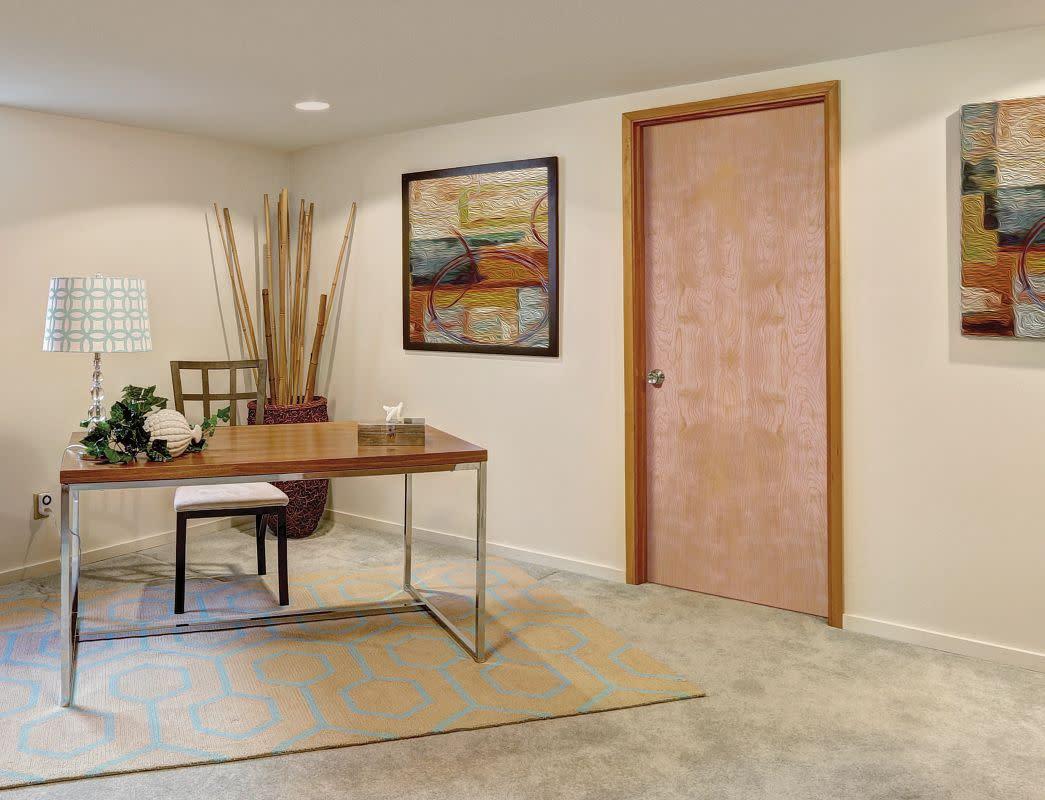Door Stop Trim & Moulding: Definition & Installation Tips
August 15, 2022
By: The Finished Space
There are dozens of types of trim and moulding that can be utilized in interior home design. Each moulding type can serve various purposes. For example, some are purely decorative, while others serve functional purposes. Then, some trim types are both decorative and functional. Door stop trim is one that’s more functional than it is aesthetic.
Are you interested in learning more about door stop trim? If so, you’ve come to the right place. In this article, we’re going to look at what door stop moulding is, and its purpose. Then, we’ll look at how to install it and share some helpful tips.
What is Door Stop Trim?
If you’ve ever walked through a door, you’ve likely seen door stop trim. You just probably didn’t know what it was called at the time. Door stop moulding (also called door stops or stop moulding) is the thin strips of trim along the inside edges of door frames that stop the door from swinging through the frame.
In other words, door stop trim is a type of moulding that attaches to the top and both sides of the door jamb. It’s where the door rests when it’s closed and the piece of trim that keeps the door from moving further than you’d like it to. It also does a terrific job of hiding the gap between the jamb and the door.
This little piece of trim is often unnoticed, but it plays a pivotal role in the function of the doors. Without door stop trim, doors could swing through and break off the hinges, and no one wants that!
In addition to making the door functional, door stop trim also increases the door’s insulation, privacy, and energy efficiency, making it a powerful piece of trim you don’t want to go without. So, how do you install door stop trim onto your doors?
How to Install Door Stop Moulding
Installing and replacing door stop moulding is pretty straightforward. Here are the steps to replace and install an interior door stop
Step One: Remove the Old Internal Door Stop
If there’s already a door stop on the door, carefully remove it. Then, sand down the jamb to ensure it’s level and smooth for the new door stop moulding installation.
Step Two: Measure the Door Jambs
Measure the width and length of the top and sides of the door jamb, so you know what size you’ll need your moulding to be.
Step Three: Cut the Door Stop Trim at a 45-Degree Angle
Use a miter saw to cut the door stop trim at a 45-degree angle. If you have old door stop moulding, you can use it as a point of reference.
Step Four: Test the Fit
Once you have the pieces cut, test the fit, and make sure it all looks right before you do any installation. They need to fit snugly. Also, take this time to ensure the door jamb is smooth and free of protrusions.
Step Five: Paint the Interior Door Stop Pieces
If your door stop trim moulding isn’t pre-painted – you’ll need to paint the door stop trim to the color you’d like. Generally, the door stop is the same color as the frame. If you don’t have the old paint or know the color, take the old door stops or a large scraping of paint from the door frame to your local paint store to match the paint color.
Step Six: Close the Door and Nail the Moulding In Place
Close the door, and line up the top door stop to the top of the door jamb. Then, use a nail gun to attach it. Then, place the door stop moulding that goes on the doorknob side.
Make sure it’s flush with the top moulding and the door, and nail it in place. Then, do the same on the remaining side. Make sure it stays still and in place as you start nailing it from the top and work your way down. Throughout the nailing process, open and close the door to ensure everything stays flush.
Step Seven: Caulk and Paint
Use caulk to cover the gap between the moulding and the door jamb. You can also use wood filler and a putty knife to cover nail holes. Finally, use a damp sponge to wipe up excess caulk and putty. Once it’s dry, it’s ready for the final coat of paint.
Get High-Quality Door Stop Trim & Moulding for Your Home
If you’re looking for high-quality door stop trim and moulding, we can help. At Metrie, we specialize in providing expertly designed trim and moulding to match any design aesthetic. Take a look at our door stop moulding here.
If you’re interested in other finishing touches, check out Option {M}. It’s our design tool that matches finishing touches with popular design trends, so you always know what types of trim work best for your aesthetic.

